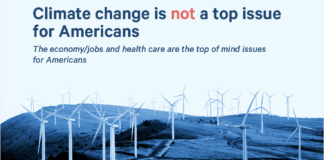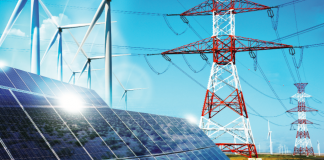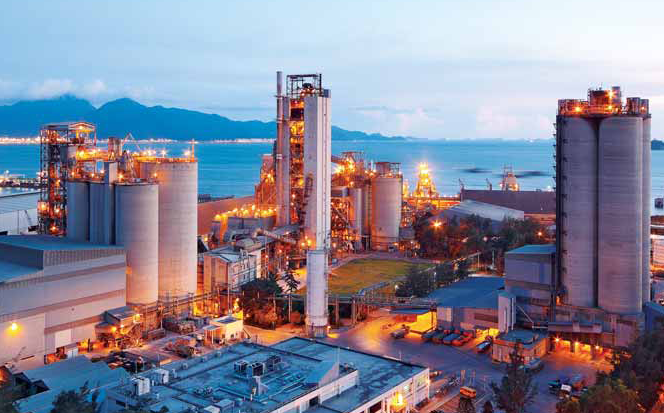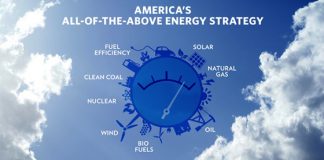New ACCF Study Finds Strong Natural Gas Market That Can Meet...
New Study Finds Strong Natural Gas Market That Can Meet Domestic and Export Demand at Low Prices
Policy Reform on Permitting and Infrastructure are Critical...
New Study Examines Petroleum Product Export Ban
New ACCF Study Finds Petroleum Product Export Ban Would Force Refinery Closures, Resulting in Higher Product Prices and Losses in Employment and GDP
ACCF Report: Transition from Traditional Nuclear Energy to Functional Nuclear Energy...
Nuclear energy is an important aspect of U.S. national security due to control of non-proliferation in the world and by providing long-lasting political and...
New Survey: Americans Worried About Climate Change, But Don’t Want to...
The Economy/Jobs and Health Care are The Top of Mind Issues for Americans When Thinking of Their Votes For Federal Offices, Not Climate Change
WASHINGTON,...
Report: Tax Reform and Clean Energy R&D
EXECUTIVE SUMMARY
The Brady-Ryan tax reform plan proposed last summer would decrease taxes on corporate profits and investment income, while preserving the existing credits for...
Impacts of Greenhouse Gas Regulations on the Industrial Sector
While the regulatory approach to reducing greenhouse gas (GHG) emissions in the United States has largely focused on the power and transportation sectors, it’s clear that substantial reductions by the industrial sector would be needed to meet President Obama’s pledge under the Paris Agreement. This report by the ACCF Center for Policy Research and the U.S. Chamber of Commerce Institute for 21st Century Energy summarizes a study conducted by NERA Economic Consulting on the potential impacts to the U.S. economy of regulating industrial sector GHG emissions.
The Rise Of China’s Civil Nuclear Program and Its Impact on...
Beijing’s civil nuclear program has made considerable growth in recent years. As early as 2000, China was considered a nuclear technology backwater with only three commercial reactors, compared to over 100 in the United States. Today, China has 35 reactors with 20 under construction. By 2030, it is projected to have 150 giga- watts of nuclear on line—roughly equivalent to Germany’s total capacity in electricity—while the U.S. nuclear fleet is expected to shrink by 20 percent or more. In little more than a decade, China could have twice the number of civilian reactors as the United States.
The U.S.-Republic of Korea Nuclear Relationship – An Indispensable Alliance
With the decline of its own civil nuclear program, the United States needs ROK’s nuclear prowess to strengthen its own market position and help uphold its nonproliferation and safety goals, especially with the looming threat of a Chinese commercial nuclear monopoly. Furthermore, the ROK provides the United States with additional foreign commercial opportunities and critical added investment.
President Obama’s Energy Legacy: Will It Last?
The new administration should focus on encouraging innovation and technological advancements so that we may continue to benefit as a nation from our vast wealth of traditional energy resources, while continuing to steadily reduce the impact on the environment from their production and use.
10-Year Review of Renewable Fuel Standard Impacts to the Environment, the...
Update
By University of Tennessee professor Dr. Daniel De La Torre Ugarte
Executive Summary
In December 2015, the Environmental Protection Agency (EPA) published its Renewable Fuel Standard...
ACCF Policy Alert No. 2: Why Climate Skeptics Should Not Object...
The Obama administration’s climate change agenda is highly controversial. Current greenhouse regulations impacting existing and new power plants will certainly drive up energy costs, distort electricity markets, and harm economic growth and job creation in the United States. EPA’s SNAP program, however, is supported by the regulated industry and carries substantial benefits for U.S. industry by allowing it to leverage its current competitive advantage in the HFC replacement market.
Technical Comments on the Social Cost of Methane As Used in...
The estimated benefits of the U.S. Environmental Protection Agency’s (EPA) proposed rule for methane and volatile organic compounds emissions from the oil and gas sector are based on assumptions that are not reasonable and insufficiently reviewed to be used to support regulatory policy making.
Clean Power Plan Subsidies for Wind Reinforces Arguments Against Renewing the...
While the credit has received broad bipartisan support in the past, it has come under increased scrutiny for distorting electricity markets and undermining the competitiveness of baseload power generation, including nuclear reactors. EPA’s recent Clean Power Plan (CPP) – which forces states to cut an average of 32 percent of their carbon emissions before 2030 — also calls into question the continued need for the tax credit because it provides substantial subsidies to wind and locks in wind carve-outs under state renewable portfolio standards.
Success Of U.S. Climate Pledge Depends On Future GHG Regulation Of...
According to several independent studies and analyses, a large gap exists in the U.S. climate pledge to the United Nations. Simply put, the greenhouse...
Managing Pacific Rim Security Risks With U.S. Energy
INTRODUCTION
Chinese policymakers are grappling with the country’s growing dependence on oil imports. Self-sufficient in crude as recently as the early 1990s, China is expected...
ACCF Policy Alert No. 1: The Death of American Uranium Enrichment?
On September 11 of this year, the Obama administration announced that it would take immediate measures to end funding of the only U.S. uranium...

















